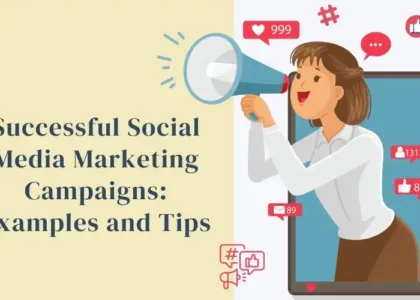There are several key steps to take when creating a digital marketing campaign on social media:
- Define your target audience: Identify the demographics, interests, and behaviors of the people you want to reach.
- Set marketing objectives: Determine what you want to achieve with your campaign, such as increasing brand awareness or driving website traffic.
- Choose the right platforms: Select the social media platforms that your target audience is most active on.
- Create engaging content: Develop content that will resonate with your audience and encourage them to engage with your brand.
- Use paid promotion: Boost your reach and engagement by using paid promotion, such as Facebook ads or Instagram Sponsored Posts.
Define your target audience
Defining your target audience is the process of identifying the specific group of people you want to reach with your marketing efforts. It involves researching and understanding the demographics, interests, behaviors, and needs of this group.To define your target audience, you can start by answering questions such as:
- Who are they? (age, gender, location, occupation, income level, etc.)
- What are their interests and hobbies?
- What are their pain points or problems that your product or service can solve?
- What are their behaviors and attitudes towards your industry or brand?
- Where do they spend their time online?
Once you have a clear understanding of your target audience, you can tailor your marketing messages and strategies to effectively reach and engage them. This will help you to increase the chances of converting them into customers.
It’s important to note that your target audience may change over time, so it’s important to regularly review and update your understanding of your audience to ensure your marketing efforts stay relevant and effective.
Set marketing objectives
Setting marketing objectives is the process of determining what specific goals you want to achieve with your marketing campaign. These objectives should be specific, measurable, attainable, relevant, and time-bound (SMART).Some common marketing objectives include:
- Increasing brand awareness: This involves raising the visibility and recognition of your brand among your target audience.
- Driving website traffic: This objective aims to increase the number of visitors to your website.
- Generating leads: This objective focuses on capturing potential customer information, such as contact details and email addresses.
- Improving customer engagement: This objective aims to increase the level of engagement and interaction between your customers and your brand.
- Boosting sales: This objective is focused on increasing the number of sales of your products or services.
It’s important to note that your marketing objectives should align with your overall business goals and objectives. Your objectives should be specific and measurable so you can track and evaluate the success of your campaign. Also, it’s important to have different objectives for different stages of your funnel
For example, if you’re running a campaign for a new product, you might have objectives for the awareness, interest and consideration stages of the funnel, and ultimately, the conversion stage.
Choose the right platforms
Choosing the right social media platforms for your digital marketing campaign is crucial to reaching and engaging your target audience effectively.To determine which platforms to use, you should consider factors such as:
- Your target audience: Which platforms are your target audience most active on? For example, if your target audience is primarily composed of young adults, you may want to focus on platforms like Instagram and Snapchat.
- Your industry and content: Different platforms have different strengths and features that are better suited to certain types of content or industries. For example, if you’re a B2B company, you may want to focus on LinkedIn, and if you’re a B2C company, you might want to focus on Instagram.
- Your budget and resources: Some platforms are more expensive than others, so you’ll need to consider your budget and resources when selecting platforms.
- Your competitors: Which platforms are your competitors most active on? This can give you an idea of where to focus your efforts.
Once you’ve determined which platforms to use, you’ll need to create a presence on each one by creating a business account and optimizing your profile to attract your target audience.
It’s important to note that you should not spread yourself too thin, it’s better to focus on a few platforms where you can create a strong presence and engage your audience effectively rather than trying to be everywhere and not being able to manage the content and engagement effectively.
Create engaging content
Creating engaging content is a crucial step in any digital marketing campaign on social media. Your content should be relevant, useful, and interesting to your target audience in order to capture their attention and encourage them to engage with your brand.Here are some tips to create engaging content:
- Know your audience: Understand the demographics, interests, and pain points of your target audience, and tailor your content to address their needs and interests.
- Use visuals: Use images, videos, and other visual content to grab attention and make your message more compelling.
- Be authentic: Use a tone and style that is true to your brand and speaks directly to your target audience.
- Be timely and relevant: Create content that is timely and relevant to current events or trends to capture attention and increase engagement.
- Use storytelling: Use storytelling to make your content more relatable and memorable.
- Encourage engagement: Use calls to action (CTAs) to encourage engagement and interaction with your content.
- Use a mix of content: Mix up the types of content you share, such as text, images, videos, infographics, etc. This will keep your audience interested and engaged.
It’s important to keep in mind that social media platforms change their algorithm frequently and a format that worked well in the past may not work now, so stay updated and adapt your content accordingly.
Use paid promotion
Using paid promotion is a great way to boost the reach and engagement of your digital marketing campaign on social media. Paid promotion allows you to target specific audiences and increase your visibility on the platform.Here are some popular paid promotion options:
- Facebook Ads: Facebook Ads allows you to create a variety of ad formats, such as image, video, and carousel ads, that you can target to specific audiences based on demographics, interests, and behaviors.
- Instagram Sponsored Posts: Instagram Sponsored Posts allows you to promote your organic posts to a larger audience by targeting specific demographics, interests, and behaviors.
- Twitter Ads: Twitter Ads allows you to create promoted tweets, promoted accounts, and promoted trends that reach a larger audience and increase engagement.
- LinkedIn Ads: LinkedIn Ads allows you to create sponsored content, sponsored InMail, and display ads that target specific audiences based on job title, industry, and company size.
- YouTube Ads: YouTube Ads allow you to create video ads that can be targeted to specific audiences based on demographics, interests, and behaviors.
It’s important to note that paid promotion can be effective, but it’s also important to set a budget and measure the results to ensure you get a good return on investment. Also, You should test different targeting options, ad formats and creatives to see what works best for your campaign and audience.





